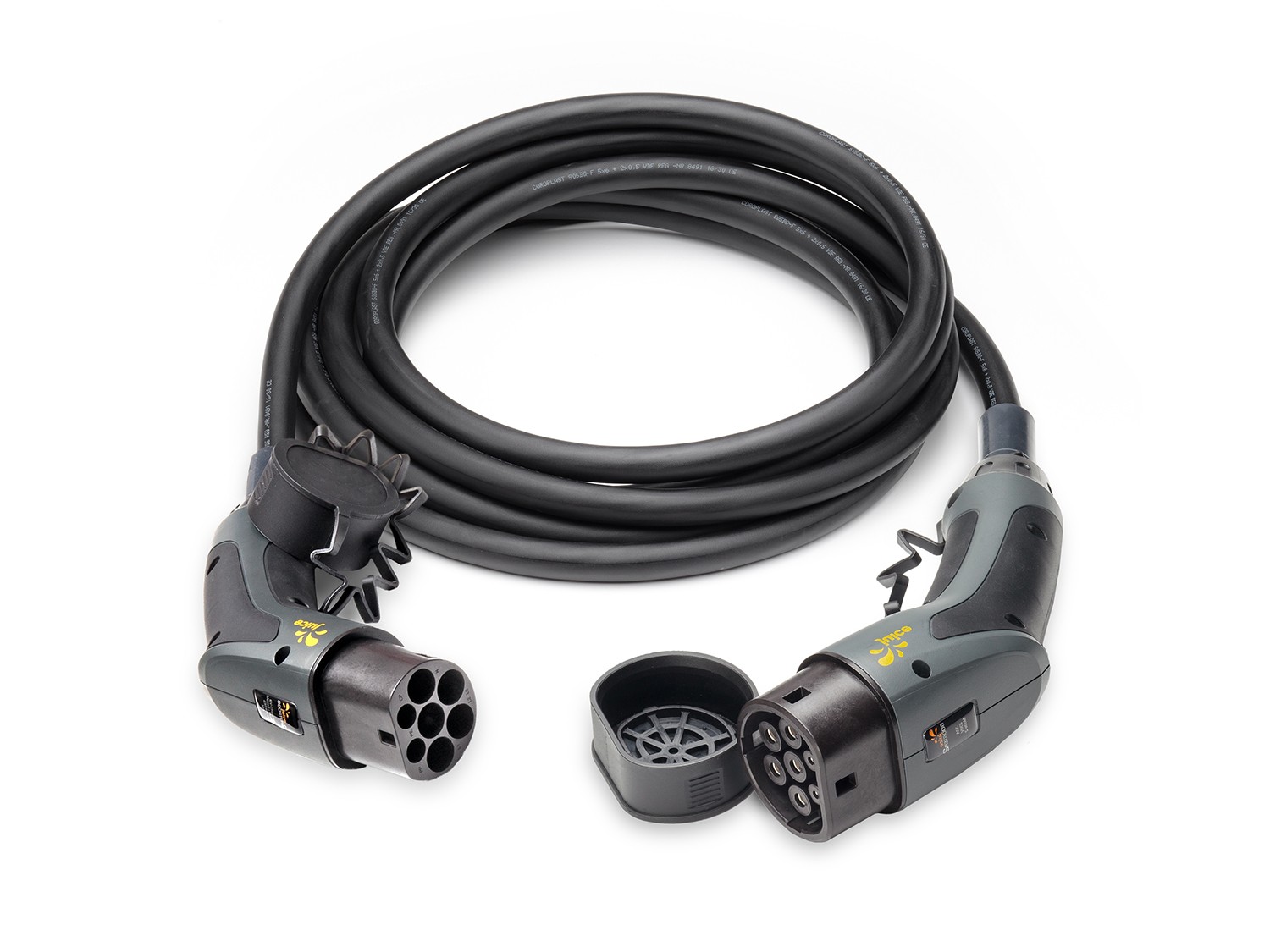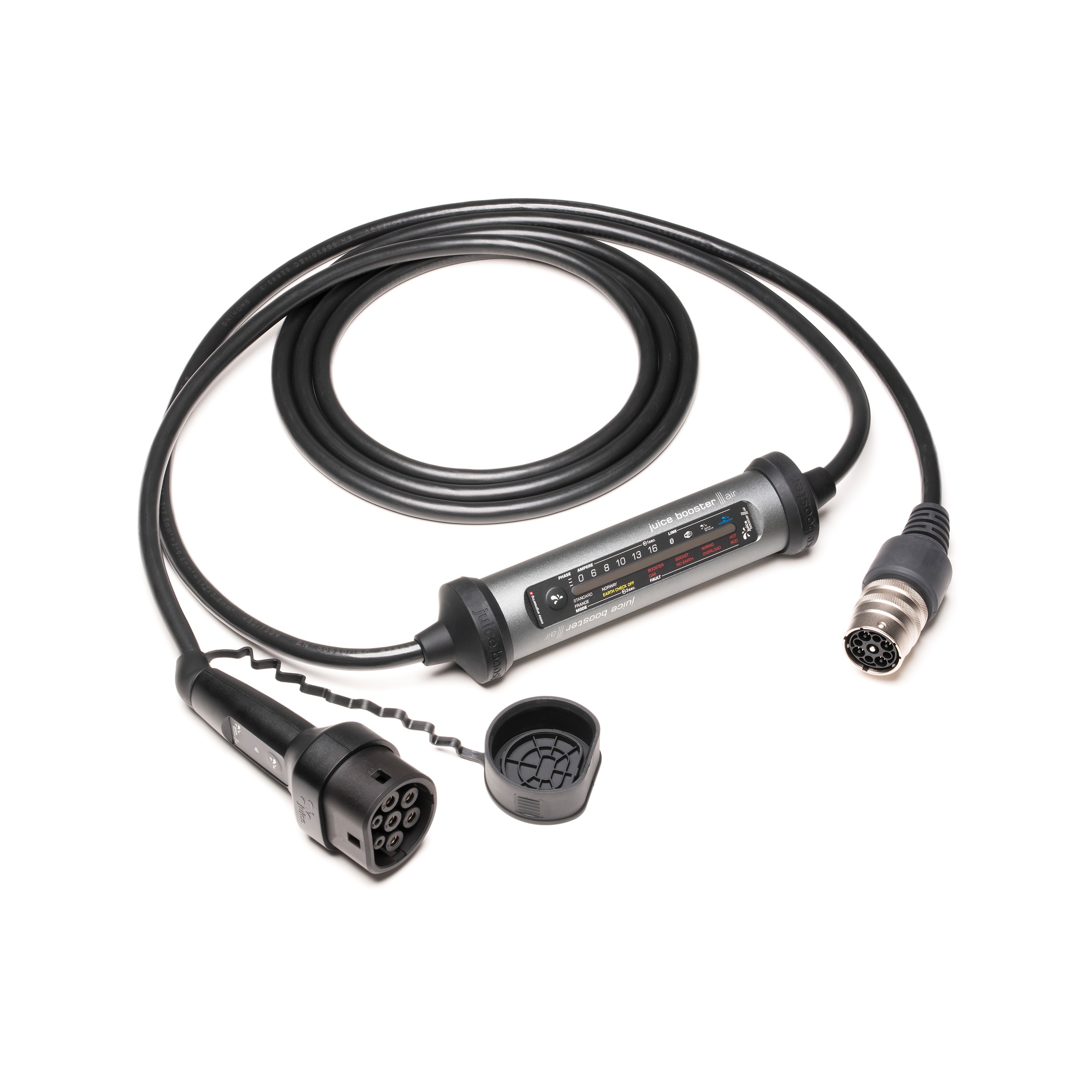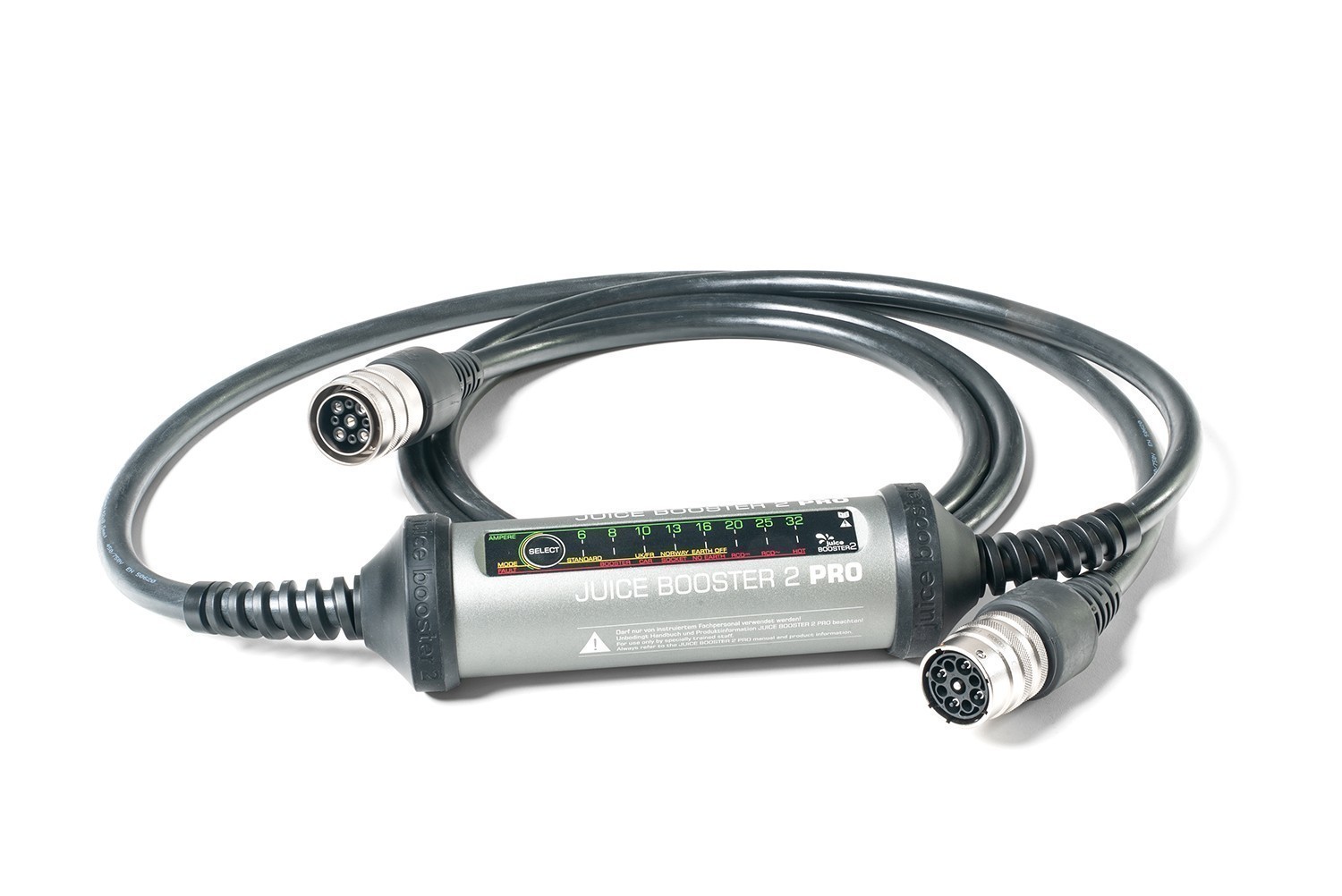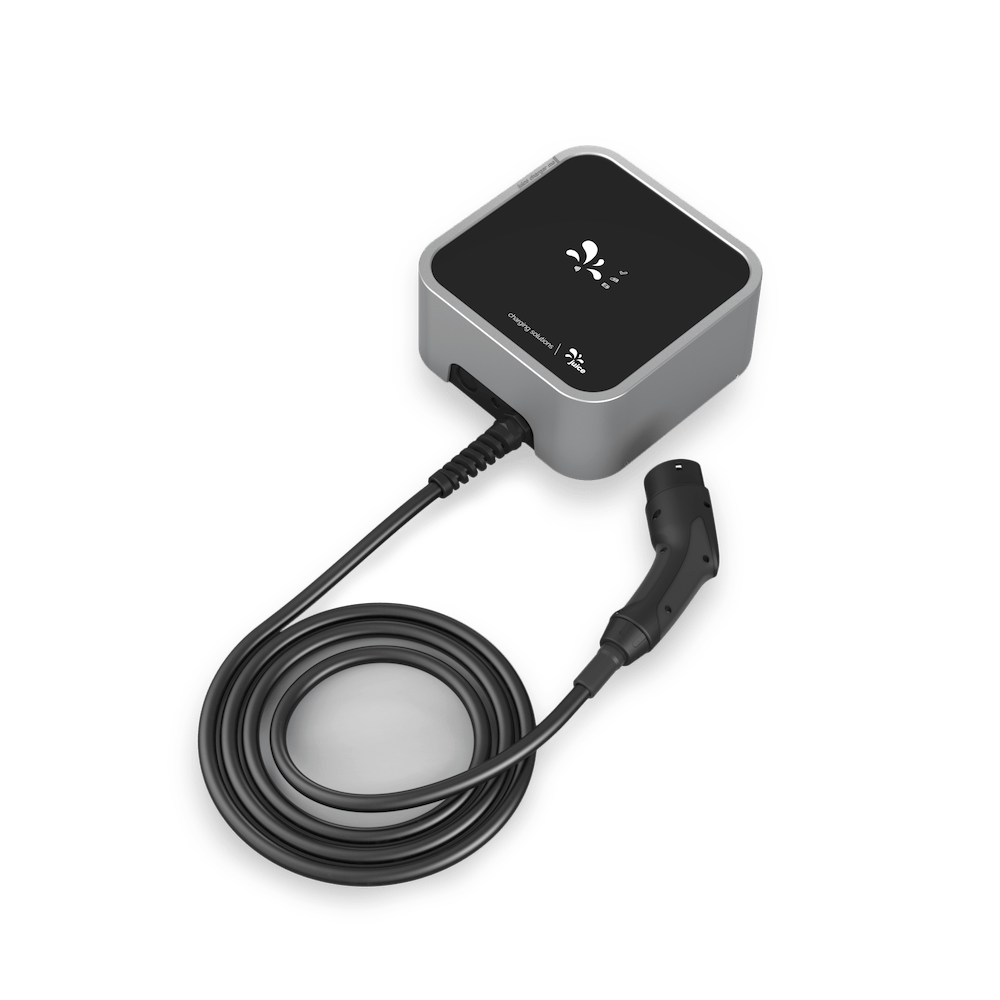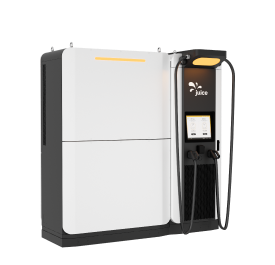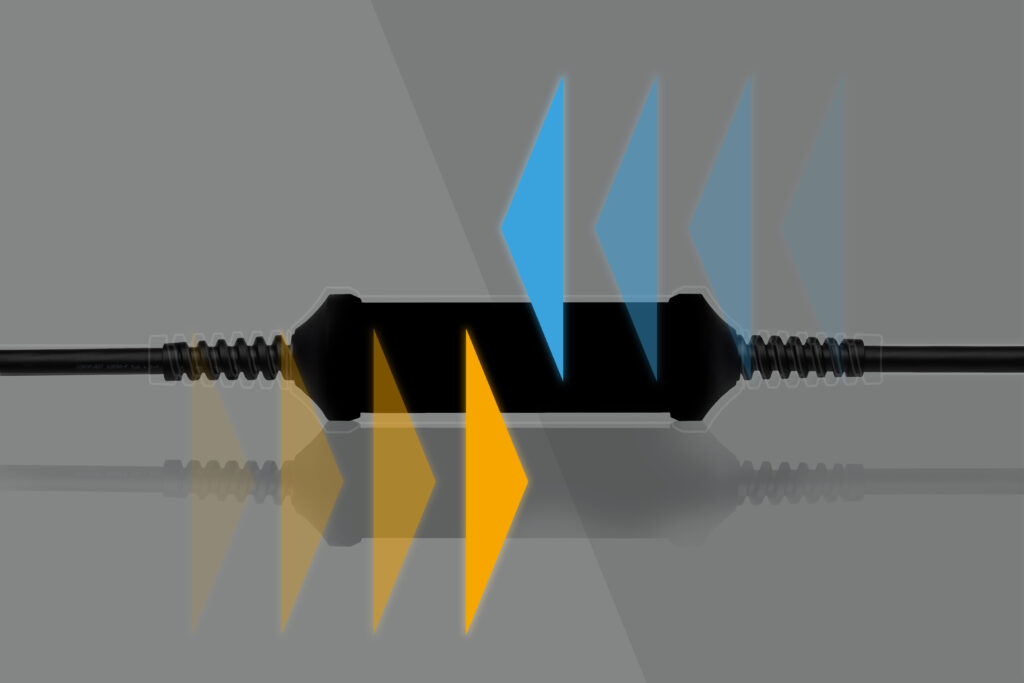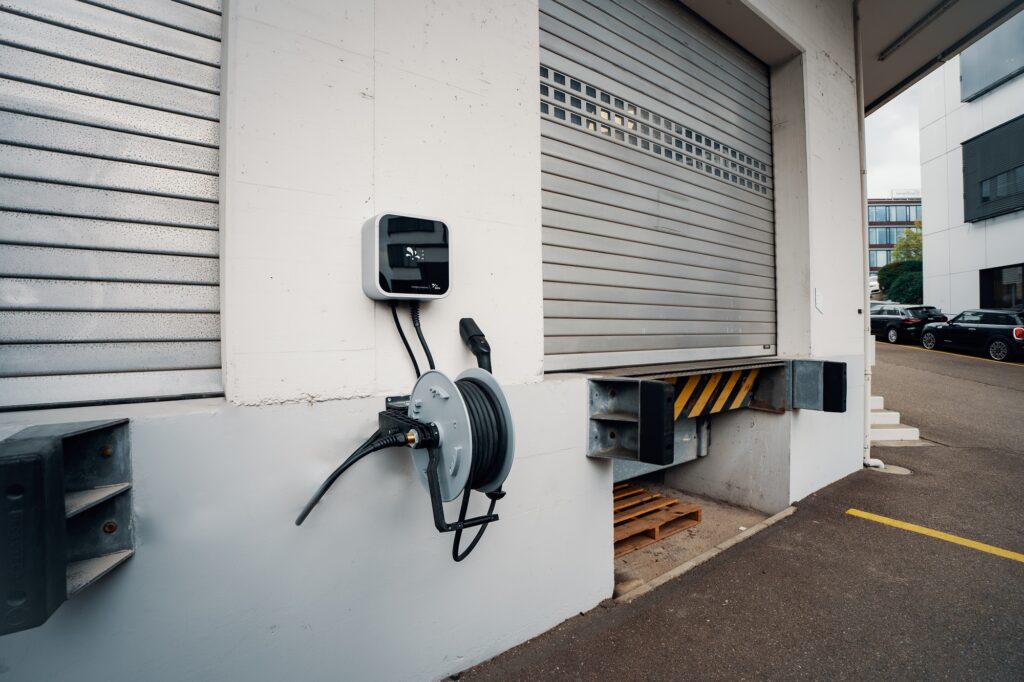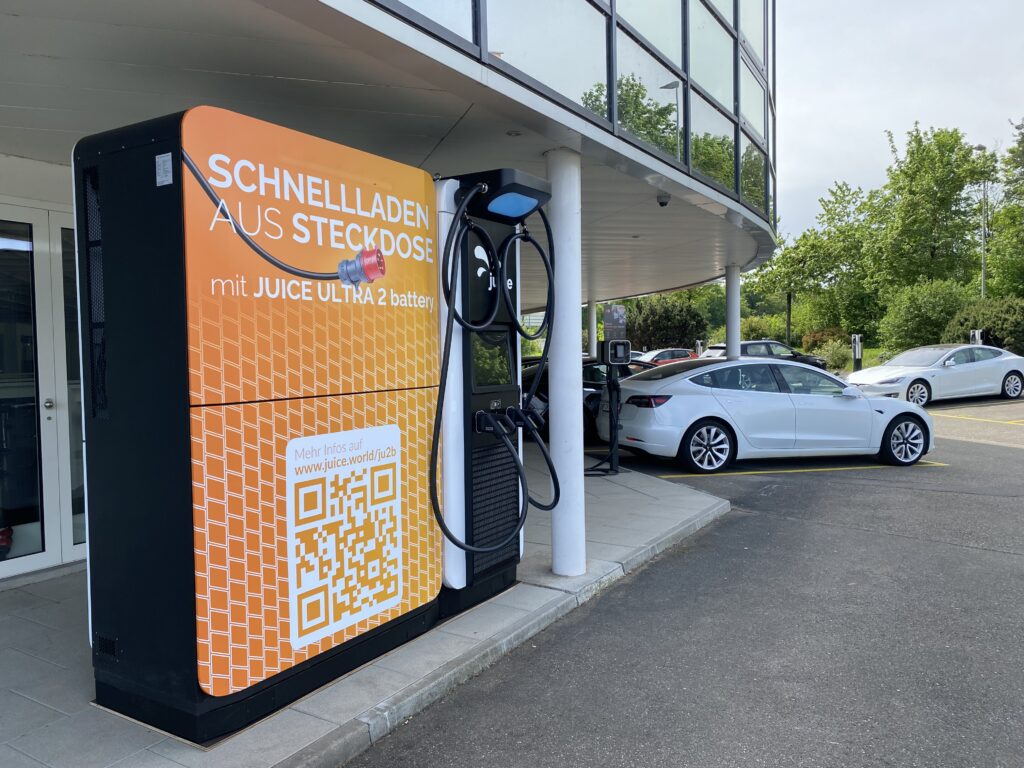Charging electric cars at home: what do I need to know?
In light of the slow expansion of the public charging network and the fact that electricity is usually cheaper at home, the convenience of home charging is just one of the many benefits offered by an electric car. To take full advantage of this opportunity, however, there a few things to bear in mind.
Below we have compiled the 7 most important questions and answers to equip all those new to home charging with the essential knowledge.
The most important questions about home charging:
- Can I simply charge my electric car from a mains socket?
- What power output should my wall charger have – 11 or 22 kW?
- Is my electrical supply sufficient or do I need to upgrade?
- How long does it take to charge my electric car at home?
- How much does a wall charger and installation cost?
- What functions should my wall charger have?
- Is there an alternative to a fixed wall charger?
Question 1: Can I simply charge my electric car from a mains socket?
Not everyone wants to rush straight out and buy a wall charger, not least because most electric cars are supplied with emergency charging cables as standard. As the name suggests, however, these are very much for emergencies only, and they should not be used with domestic power sockets for extended periods.
As a general rule, it is possible to charge an electric car from a mains power outlet. However, these sockets are not designed to be subjected to such a high continuous load over several hours and, depending on the age and condition of the line and contacts, this can therefore lead to a safety hazard.
If you still wish to charge from a mains socket, you must use a charger that is fully standard-compliant, such as the mobile wall chargers JUICE BOOSTER 2 or 3 air. These feature automatic power adjustment based on the adapter that is employed.
Another advantage is that the JUICE BOOSTER devices possess all the necessary safety features, including active temperature monitoring and integrated fault current detection. The latter trips effectively at the prescribed values, thus eliminating the need for an expensive Type B residual current device.
Question 2: What power output should my wall charger have – 11 or 22 kW?
The maximum power that an electric car can be charged with is dictated by the vehicle itself. Most vehicles currently available on the market can be charged with a maximum of 11 kW.
Before any installation, it also important to know the applicable regulations, which vary from country to country. In Germany, the installation of an 11-kW wall charger simply has to be registered with the relevant network operator. There is no additional, laborious licensing procedure to complete.
For a 22-kW wall charger, the process is rather different. In this case, an additional license is required, and obtaining this can take some time. Therefore, from an administrative perspective, registering an 11-kW wall charger is usually much more straightforward. This makes it the ideal option for those who like to keep things simple and dispense with any additional formalities.
Question 3: Is my electrical supply sufficient or do I need to upgrade?
The power supply in your house or garage is an important aspect and should of course be sufficient to provide the maximum charging capacity. For 11 kW, a three-phase supply with 400 V and 16 A is required.
Establishing whether your house or garage has a suitable supply for the high-voltage electricity is a job for a professional electrician. They can also determine whether a residual current device needs to be installed. If a suitable supply is already in place, the electrician merely needs to hook up the wall charger so that it can be used for charging. Wall chargers such as the JUICE CHARGER me 3 are supplied fully preconfigured (Plug & Play) and are ready for use in a flash.
Question 4: How long does it take to charge my electric car at home?
The necessary charging time depends on a number of factors, such as the available capacity of the electrical supply and the residual energy in the battery. The charging capacity itself is always dictated by the weakest link in the charging chain.
For example:
A Tesla Model 3 has a battery capacity of 80 kWh and charges with 11 kW from a domestic wall charger.
A full charge would therefore take a little over seven hours: 80 kWh / 11 kW = 7.2h.
In everyday use, however, the battery is almost never fully drained, which is why the charging process is usually somewhat quicker. The average distance covered by a European driver on a given day ranges between 40 and 60 km. Based on a mean consumption of 17 kWh per 100 km, this can be replenished in less than 60 minutes when using an 11-kW wall charger.
Important note: Depending on the battery technology installed, the state of charge (SoC) should be kept between 20% and 80% in order to protect the battery and extend its service life – more information can be found here.
Question 5: How much does a wall charger and installation cost?
The costs are very difficult to estimate since they depend on a number of factors, such as the materials (cables, chosen wall charger, RCD) and the labour involved (installation, any necessary wall penetrations).
Important note: The cable installation and the connection of a high-voltage power outlet or wall charger must be performed by a professional. A certified electrician will be able to visit the installation site and assess the situation with regard to the existing wiring as well as the necessary work and associated costs.
Tip: Be sure to contact your local authority or council to find out about any grants that might be available for the wall charger or installation.
Question 6: What functions should my wall charger have?
An intelligent wall charger is much more than a “fancy socket”: it is a device with important features to ensure a safe charging process that you can monitor and control.
An intelligent wall charger should have the following functions:
- RFID: activation via RFID cards to identify the users
- MID counter: for precise, user-friendly billing in semi-public areas
- Load management: for dynamic load distribution across multiple electric cars
- Communication with backend: power distribution, user administration, station management and remote maintenance without additional devices
If the charging station is only to be used by selected persons, activation via RFID is the best solution. This will require users to identify themselves with an RFID card or tag in order to obtain electricity for their cars, which in turn allows the energy consumption to be assigned to them.
If the wall charger is installed in a semi-public place (e.g. in a garage for the tenants or apartment owners within a building), RFID activation can be used in combination with an integrated MID counter to keep an accurate record of which resident used how much electricity.
If multiple cars are to be charged simultaneously in a large garage, this requires a load management system. Even with just two cars, this system will ensure that the available capacity is distributed dynamically and that the power supply isn’t overloaded.
Question 7: Is there an alternative to a fixed wall charger?
Would you like to charge your electric car just as safely on the road as you do from your fixed wall charger at home?
The JUICE BOOSTER 2 and JUICE BOOSTER 3 air are practical and mobile alternatives to fixed wall chargers. They offer the same safety levels and charging capacity as a wall-mounted charging station with the added benefit that they are portable and can be used practically anywhere.
With the correct adapter, any conventional socket becomes a practical charging facility – be it at home or on the go. And when combined with a Type 2 adapter, your JUICE BOOSTER becomes a Mode 3 charging cable for public charging stations.
With the JUICE BOOSTER 3 air, you can even control and monitor the charging process remotely via the “j+ pilot” app. Moreover, the smartJUICE dynamic charging management enables simultaneous operation of up to ten devices. This makes it equally well suited to smaller, communal installations with multiple devices.
Good to know: With a mobile wall charger, the installation of a high-voltage power outlet is both sufficient and more affordable than fitting a fixed wall-mounted charging station. The JUICE BOOSTER 3 air, for example, can then be connected with the red CEE16 adapter to enable charging with the full 11-kW output.
The main points at a glance
When compared to public charging, you can save both time and money by charging at home, as soon as your charging solution is up and running.
We have recapped the main points to bear in mind below.
- You should only charge from a domestic power outlet in emergencies and only for a few hours at a time. This is because domestic sockets are not designed for such a high continuous load. However, you can charge without issue using standard-compliant wall chargers such as the JUICE BOOSTER, which boasts all the relevant safety features.
- Since most electric cars can be charged with a maximum of 11 kW, a wall charger with this charging capacity is sufficient for 90% of vehicles.
- To benefit from the full power output of a wall charger, you require a suitable electrical supply, which must be set up by an electrician. They can inspect the existing supply on-site to establish whether it needs to be upgraded or replaced, and they can give you a quote for the installation costs.
- With a charging capacity of 11 kW, it takes approximately seven hours to fully charge an electric car with 80 kWh battery capacity, though this is very rarely necessary.
- Depending on your country of residence, you need to check whether a wall charger has to be registered with the relevant authorities.
- The most important functions of a fixed wall charger include RFID activation, an MID counter, dynamic load management, an efficient backend and access to a web or mobile app.
- Alternatively, you can opt for mobile charging solutions, which – like the JUICE BOOSTER 3 air – are in no way inferior to fixed wall chargers when it comes to power and features.
Which wall charger you choose depends entirely on your specific needs. If you are aware of the main factors to consider and are familiar with your own driving and charging habits (at home or on the road), you will soon find the ideal charging solution.
